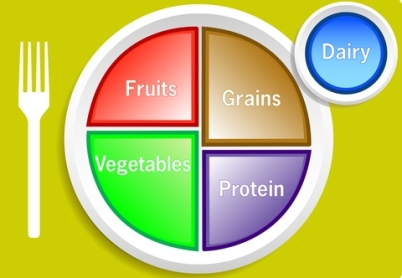My plate, USDA style

By adopting the USDA’s recommended food portion guide, schools around the country could introduce healthier cafeteria food options to students.
Thanks to a changing understanding of the relationship between nutrition and cognition, and the U.S. Department of Agriculture standards, school lunches are getting healthier.
Since 1917 the USDA has adjusted its dietary guidelines every few years. The latest: My Plate, adopted in 2011. It replaced the food pyramid, used for 30 years, though it had been adjusted frequently over those years as guidelines changed.
The new and improved My Plate graphic shows Americans what to eat for a healthy and nutritious diet. It’s supposed to be easier to understand than a pyramid since it shows what a plate should look like at each meal.
The USDA guidelines are behind the push for more seasonal fruits and vegetables for school lunch. Portland Public Schools also created the Local Flavors program to service fresh food from local farms. For example, PPS teams with local farmers and companies for 100 percent whole grain bread and pizza crusts.
More fruits, vegetables and whole grains equals healthier students who learn to make healthier choices.
